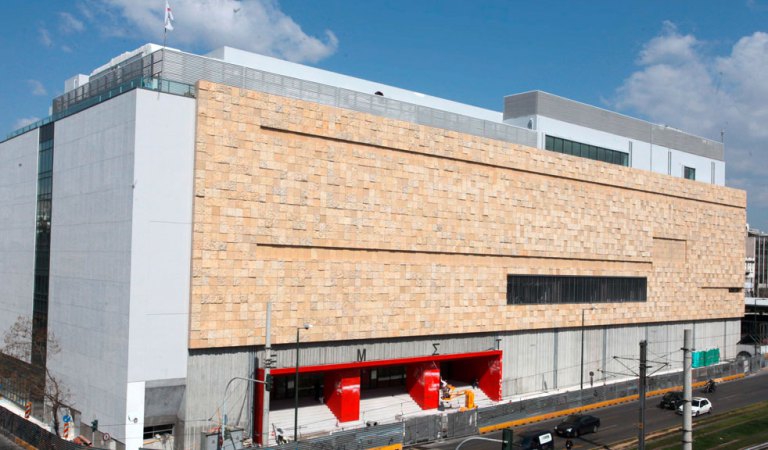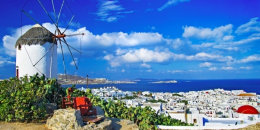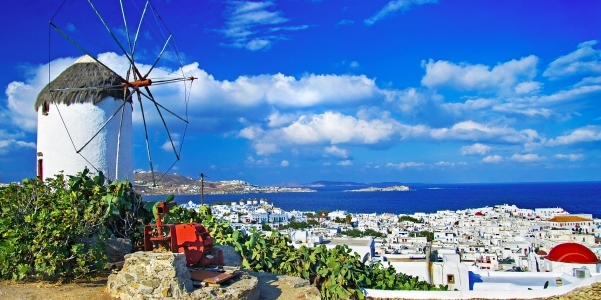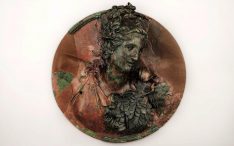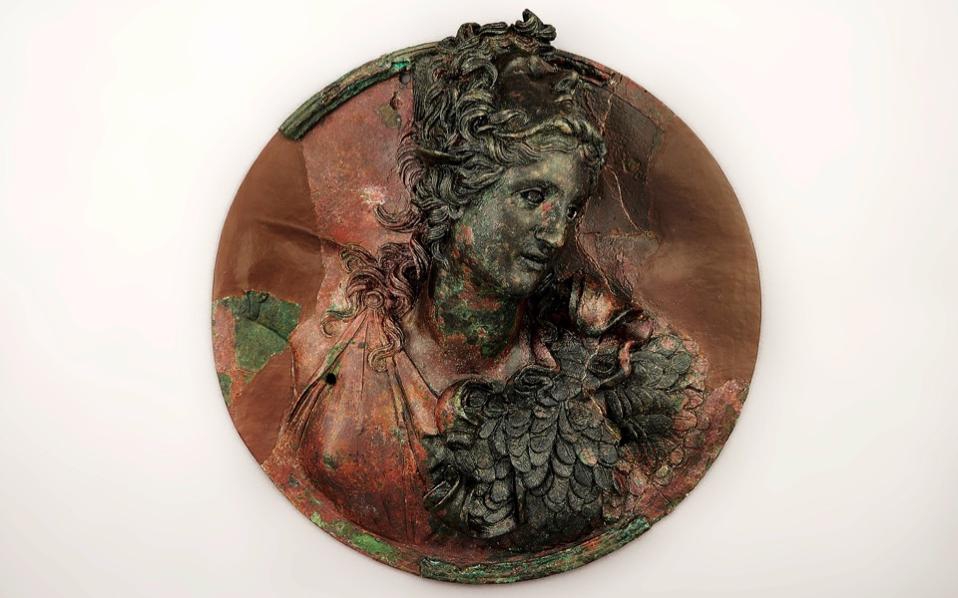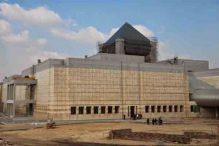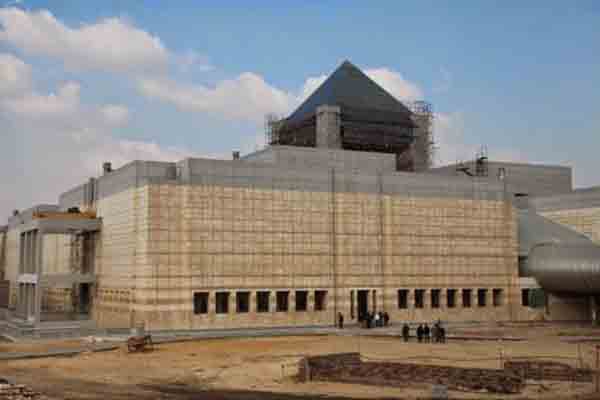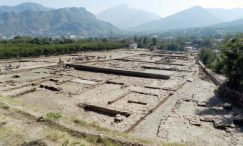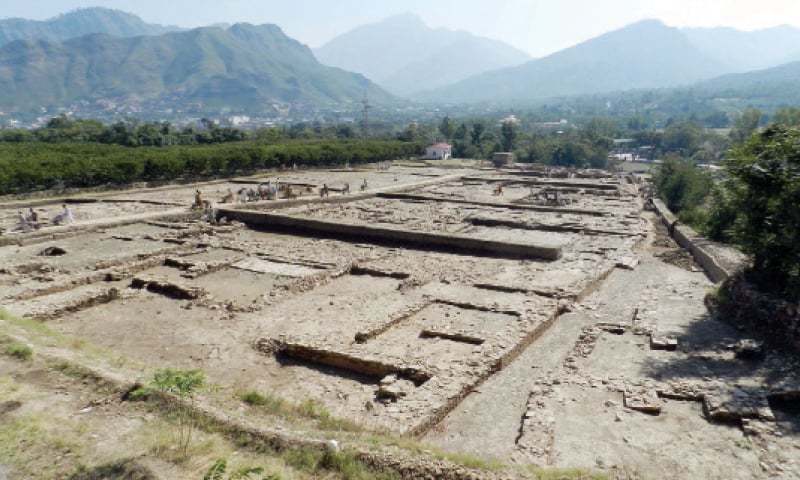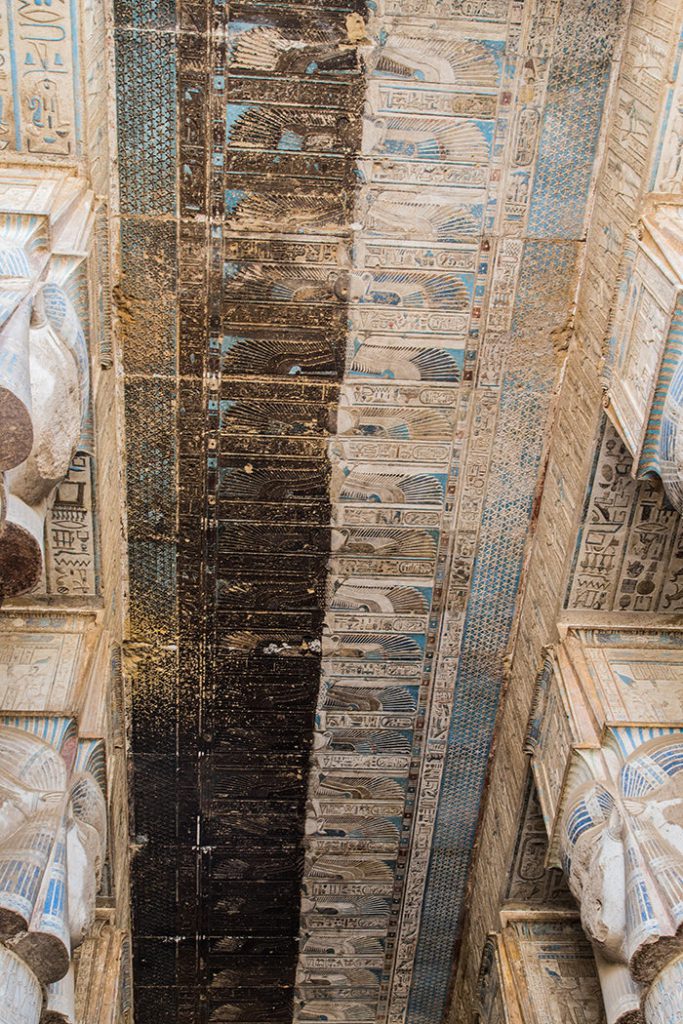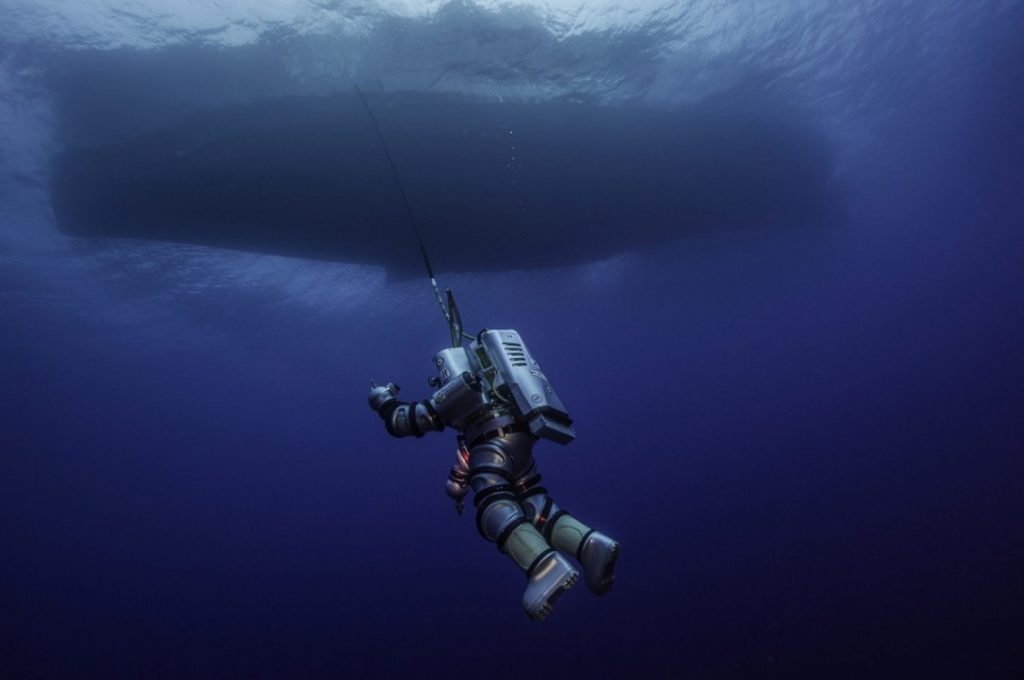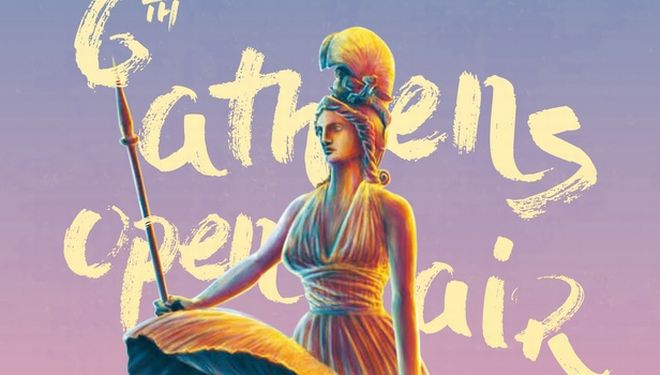 Οπως κάθε χρόνο την τελευταία πενταετία, μαζί με το καλοκαίρι στην Αθήνα έρχεται και το Athens Open Air Film Festival, με δωρεάν προβολές ταινιών σε θερινά σινεμά και εξωτερικούς χώρους της πόλης.
Οπως κάθε χρόνο την τελευταία πενταετία, μαζί με το καλοκαίρι στην Αθήνα έρχεται και το Athens Open Air Film Festival, με δωρεάν προβολές ταινιών σε θερινά σινεμά και εξωτερικούς χώρους της πόλης.
Φέτος το πρόγραμμα περιλαμβάνει από μιούζικαλ μέχρι γουέστερν και από κλασικές ταινίες τρόμου μέχρι κλασικά αριστουργήματα, συν cult ταινίες που αξίζει να ανακαλύψετε και ένα αφιέρωμα στις εναλλακτικές κινηματογραφικές μεταφορές έργων του Γουίλιαμ Σαίξπηρ από σπουδαίους σκηνοθέτες και ακόμη πιο σπουδαίους ερμηνευτές, με αφορμή την επέτειο των 400 χρόνων από το θάνατό του.
Οι προβολές του Athens Open Air Film Festival πραγματοποιούνται με την ευγενική υποστήριξη του ΕΟΤ και συνδιοργανωτής της μεγαλύτερης υπαίθριας κινηματογραφικής γιορτής στην πόλη είναι ο Οργανισμός Πολιτισμού, Αθλητισμού & Νεολαίας του Δήμου Αθηναίων.
Στην μεγάλη κινηματογραφική γιορτή συμμετέχει και η Fischer, η μπίρα που αγαπάει τον καλό κινηματογράφο και συμπληρώνει ιδανικά τις ξεχωριστές στιγμές του 6ου Athens Open Air Film Festival, δροσίζοντας απολαυστικά και κερνώντας το κοινό των προβολών.
ΠΡΟΓΡΑΜΜΑ
Τρίτη 21 Ιουνίου / Εορτασμός της Ευρωπαϊκής Γιορτής Μουσικής / «Purple Rain» (1984) του Aλμπερτ Μαγκνόλι / Πλατεία Αυδή (Λεωνίδου 35, Αθήνα)
H σχεδόν αυτοβιογραφική ταινία που εκτόξευσε το αστέρι του Prince στην κορυφή, αποτέλεσε μια από τις μεγαλύτερες εισπρακτικές επιτυχίες στα ταμεία της δεκαετίας του ’80 και γέννησε ένα από τα κορυφαία σάουντρακ όλων των εποχών.
Παρασκευή 24 Ιουνίου / Αφιέρωμα «Shakespeare in the City» / «Ριχάρδος o 3ος» (Richard III, 1995) του Ρίτσαρντ Λονκρέιν / Aλσος Μπαρουτάδικο (Ιερά Οδός 290, Αιγάλεω)
Ο Iαν ΜακΚέλεν παραδίδει μαθήματα υποκριτικής στην εκμοντερνισμένη, εντυπωσιακή σκηνογραφικά και πιο ανορθόδοξη διασκευή του βίαιου σαιξπηρικού έργου.
Τρίτη 28 Ιουνίου / Επίσημη Πρεμιέρα (είσοδος μόνο με προσκλήσεις και δελτία εισόδου) / «West Side Story» (1961) των Τζερόμ Ρόμπινς και Ρόμπερτ Γουάιζ / Ναός Ολυμπίου Διός (είσοδος από Λεωφ. Βασιλίσσης Όλγας & από Λεωφ. Αμαλίας για ΑμεΑ)
Ο μουσικοχορευτικός θρίαμβος των 10 Όσκαρ με τις αξέχαστες μελωδίες του Λέοναρντ Μπέρνσταϊν και το ιδιοφυές λιμπρέτο του Στίβεν Σόντχαϊμ, σε μία επετειακή προβολή 55 χρόνων από την πρώτη κυκλοφορία του ριζοσπαστικού αυτού φιλμ.
Παρασκευή 1 Ιουλίου / «The Innocents» (1961) του Τζακ Κλέιτον / Aλσος Πετραλώνων (εντός γηπέδου μπάσκετ, Πετράλωνα)
Ο Τζακ Κλέιτον διασκευάζει εκπληκτικά το «Στρίψιμο της Βίδας» του Χένρι Τζέιμς σε ένα αριστούργημα ατμόσφαιρας και υποβολής, που το Περιοδικό ΣΙΝΕΜΑ αναγόρευσε σε καλύτερη ταινία τρόμου όλων των εποχών.
Τρίτη 5 Ιουλίου / «Αγκίρε, η Μάστιγα του Θεού» (Aguirre, der Zorn Gottes, 1972) του Βέρνερ Χέρτζογκ / Ανοιχτό Θέατρο Κολωνού (Λόφος Ιππείου Κολωνού, Αθήνα)
Μία εξερευνητική αποστολή στον Αμαζόνιο καταλήγει σε μια συγκλονιστική πραγματεία πάνω στην τρέλα του μεγαλείου η οποία δονείται από τη δαιμονική, παροξυσμική παρουσία του Κλάους Κίνσκι. Το αδιαφιλονίκητο καλλιτεχνικό αποκορύφωμα του Βέρνερ Χέρτζογκ.
Πέμπτη 7 Ιουλίου / Aφιέρωμα «Shakespeare in the City» / «Μάκβεθ» (The Tragedy of Macbeth, 1971) του Ρόμαν Πολάνσκι / Πειραιώς 260 (Πειραιώς 260, Άγιος Ιωάννης Ρέντης)
Ο Πολάνσκι παρουσιάζει μια εφιαλτική εκδοχή της περίφημης σεξπηρικής τραγωδίας πάνω στις αιματηρές συνέπειες του ασίγαστου πόθου για εξουσία, με φόντο το τραχύ τοπίο της βόρειας Ουαλίας.
Παρασκευή 8 Ιουλίου / «Η Απειλή» (The Thing, 1982) του Τζον Κάρπεντερ / Θέατρο Αττικού Αλσους (Περιφερειακός Γαλατσίου, είσοδος από Καρπενησιώτη)
Σε μια από τις πιο κλασικές πλέον δημιουργίες του sci-fi είδους, ο σκηνοθέτης του «Halloween» προσκαλεί σε μία μαζική άσκηση φαντασίας, αγωνίας και ανείπωτης φρίκης που θα σας παγώσει το αίμα.
Δευτέρα 11 Ιουλίου / «Φιλιά εις τα Παιδιά» (Children in Hiding, 2011) του Βασίλη Λουλέ / Πεζόδρομος Ερμού (Ερμού 150, απέναντι από την είσοδο του Μουσείου Κεραμεικού)
Πέντε ηλικιωμένοι Ελληνοεβραίοι αφηγούνται στον φακό τις δοκιμασίες τους, ως παιδιά, από την Ελλάδα της γερμανικής κατοχής. Ο Βασίλης Λουλές ανασύρει μνήμες από την εισβολή των ναζί, την απεγνωσμένη φυγή, τη σωτηρία των παιδιών σε φιλόξενα σπίτια άλλων Ελλήνων και το βάρος της προσωπικής απώλειας σε ένα από τα πιο συγκινητικά ελληνικά ντοκιμαντέρ των τελευταίων χρόνων. Η ταινία θα προβληθεί στις 11 Ιουλίου, την ημέρα που ξεκίνησε ο επίσημος μαζικός διωγμός των Εβραίων της Θεσσαλονίκης το 1942, στην πλατεία Ελευθερίας. Έχει μείνει στην ιστορία ως το «Μαύρο Σάββατο».
Τετάρτη 13 Ιουλίου / Στο πλαίσιο του Φεστιβάλ Αθηνών & Επιδαύρου και του αφιερώματος «Shakespeare in the City» / «Η Τρικυμία» (The Tempest, 1979) του Ντέρεκ Τζάρμαν / Πειραιώς 260 (Πειραιώς 260, Άγιος Ιωάννης Ρέντης)
Ο Τζάρμαν αναμετριέται με το κύκνειο άσμα του Σαίξπηρ και βάζει την αιρετική υπογραφή του σε μία από τις πιο γοητευτικά παράδοξες μεταφορές έργου του Βρετανού βάρδου στη μεγάλη οθόνη.
Πέμπτη 14 Ιουλίου / «Ντίβα» (Diva, 1981) του Ζαν-Ζακ Μπενέξ / Σινέ Δεξαμενή (Πλατεία Δεξαμενής, Αθήνα)
Από τις πιο αγαπημένες ταινίες των θεατών της δεκαετίας του ’80, αυτός ο μαγευτικός συνδυασμός νουάρ και ρομάντζου απέδωσε με έξοχους κινηματογραφικούς όρους αυτό που μέχρι σήμερα εξακολουθούμε να αποκαλούμε μοντέρνο σινεμά.
Τρίτη 19 Ιουλίου / «Aliens» (1986) του Τζέιμς Κάμερον / Τρένο στο Ρουφ (Επαρχιακή Οδός Καλλιθέας-Ολυμπιάδας, Αθήνα)
Εντυπωσιακά εφέ, καταιγισμός δράσης, σκηνές δυσβάσταχτης αγωνίας και ανελέητοι ρυθμοί σε ένα ένδοξο σίκουελ που στέκεται επάξια πλάι στην πρωτότυπη ταινία του Ρίντλεϊ Σκοτ και εκτοξεύει την ηρωίδα του στη λίστα με τις πιο διαχρονικές φιγούρες του σινεμά.
Τετάρτη 20 Ιουλίου / Στο πλαίσιο του Φεστιβάλ Αθηνών & Επιδαύρου και του αφιερώματος «Shakespeare in the City» / «Βασιλιάς Ληρ» (King Lear, 1970) του Πίτερ Μπρουκ / Πειραιώς 260 (Πειραιώς 260, Άγιος Ιωάννης Ρέντης)
Δυο ιερά τέρατα του αγγλικού θεάτρου, ο σκηνοθέτης Πίτερ Μπρουκ και ο ηθοποιός Πολ Σκόφιλντ, μεταμορφώνουν την τραγωδία του «Βασιλιά Ληρ» σε κινηματογραφικό θέαμα υψηλής ποιότητας.
Παρασκευή 22 Ιουλίου / «Η Ετυμηγορία» (The Verdict, 1982) του Σίντνεϊ Λουμέτ / Σινέ Τριανόν (Οδός Κοδριγκτώνος 21, Αθήνα)
Με έναν εξαιρετικό Πολ Νιούμαν στον πρωταγωνιστικό ρόλο, ένας από τους μέγιστους δημιουργούς του αμερικανικού σινεμά υπογράφει μια από τις καλύτερες ταινίες του: Ενα συγκλονιστικό δικαστικό δράμα το οποίο στάθηκε σημείο αναφοράς για αμέτρητα φιλμ που ακολούθησαν.
Δευτέρα 25 Ιουλίου / Σινεμά μετά μουσικής / «Dementia» (1955) του Τζoν Πάρκερ συνοδεία μουσικής επένδυσης από τον The Boy / Ταινιοθήκη της Ελλάδος (Ιερά Οδός 48, Αθήνα)
Η νυχτερινή οδύσσεια μιας μοναχικής γυναίκας στους δρόμους της μεγαλούπολης την οδηγεί σε σκοτεινά μονοπάτια σεξουαλικής απόγνωσης και παράνοιας, σε αυτό το πραγματικά αλλόκοτο και ακόμη ανεξερεύνητο από το ευρύ κοινό νουάρ που δεν έχει καθόλου διαλόγους, αφήνοντας να μιλήσει η εξπρεσιονιστική γλώσσα των εικόνων.
Παρασκευή 29 Ιουλίου / «Αμαντέους» (Amadeus, 1984) του Μίλος Φόρμαν (ο χώρος θα επιβεβαιωθεί τις επόμενες ημέρες)
Το βραβευμένο με 8 Οσκαρ κομψοτέχνημα του Μίλος Φόρμαν για τον Βόλφγκανγκ Αμαντέους Μότσαρτ είναι μία ταινία που ξεπέρασε τα όρια της μουσικής βιογραφίας. Βασισμένη στο ομώνυμο θεατρικό έργο του καταξιωμένου Πίτερ Σάφερ, έγινε μία οξυδερκή σπουδή για το χάσμα ανάμεσα στο θεϊκό ταλέντο και την ανθρώπινη μετριότητα.
Παρασκευή 19 Αυγούστου / «Προετοιμασία για Eγκλημα» (Dressed to Kill, 1980) του Μπράιαν Ντε Πάλμα / Ταινιοθήκη της Ελλάδος (Ιερά Οδός 48, Αθήνα)
Προκλητικός αισθησιασμός, σοκαριστική βία, ατσαλένιο σασπένς και ραδιούργες σεναριακές εκπλήξεις σε ένα διεστραμμένα απολαυστικό ψυχολογικό θρίλερ που ο Ντε Πάλμα σκηνοθετεί με απερίγραπτη μαεστρία και απροκάλυπτη ηδονή.
Παρασκευή 26 Αυγούστου / Αφιέρωμα «Shakespeare in the City» / «Ερρίκος ο 5ος» (Henry V, 1944) του Λόρενς Ολίβιε / Πεζόδρομος Δ. Αρεοπαγίτου (απέναντι από το Μουσείο της Ακρόπολης)
Πόλεμος, διαφθορά, ρομαντισμός και …Λόρενς Ολίβιε. Ο ηθοποιός που αποτέλεσε συνώνυμο της σαιξπηρικής αναπαράστασης σε θέατρο και σινεμά, αναλαμβάνει το ρόλο του Ερρίκου του 5ου και ενορχηστρώνει ως σκηνοθέτης μερικές από τις πιο επικές (και αιματηρές) σκηνές μάχης της 7ης τέχνης.
Δευτέρα 29 Αυγούστου / Αφιέρωμα «Shakespeare in the City» / «Το Θέατρο του Αίματος» (Theatre of Blood, 1973) του Ντάγκλας Χίκοξ / Νομισματικό Μουσείο (Πανεπιστημίου 12, Αθήνα)
Γκραν γκινιόλ τρόμος, ακαταμάχητο μαύρο χιούμορ και ένας σαρδόνιος Βίνσεντ Πράις που δεν χορταίνεις να βλέπεις πρωτοστατούν σε αυτή την εκκεντρική παρωδία, όπου ένας ηθοποιός εκδικείται τους κριτικούς θεάτρου που τον απαξίωσαν, έχοντας ως εγχειρίδιο φόνου τα έργα του Σαίξπηρ!
Τετάρτη 31 Αυγούστου / «Κάποτε στη Δύση» (Once Upon a Time in the West, 1968) του Σέρτζιο Λεόνε / Ακαδημία Πλάτωνος (Μοναστηριού 137, Αθήνα)
Οι αξεπέραστες μουσικές παρτιτούρες του Ενιο Μορικόνε, το κοφτερό σαν μαχαίρι βλέμμα του Χένρι Φόντα, η μεγαλειώδης σκηνοθεσία του Σέρτζιο Λεόνε, η Κλαούντια Καρντινάλε να σκορπίζει την ομορφιά της σε ένα σκληρό κόσμο αντρών και η μυθολογία της Αγριας Δύσης συνηγορούν στο να γεννήσουν ένα από τα ανυπέρβλητα γουέστερν έπη του κινηματογράφου.
Παρασκευή 2 Σεπτεμβρίου / «Οι Αταίριαστοι» (Misfits. 1961) του Τζον Χιούστον (ο χώρος θα επιβεβαιωθεί τις επόμενες ημέρες)
Eνα μελαγχολικό και ελεγειακό ρέκβιεμ για τους υπέροχους losers αυτού του κόσμου με πρωταγωνιστές τους Κλαρκ Γκέιμπλ, Μέριλιν Μονρό και Μοντγκόμερι Κλιφτ στις τελευταίες κινηματογραφικές παρουσίες τους.
Δευτέρα 5 Σεπτεμβρίου / Προβολή έκπληξη για τα 40 χρόνια του περιοδικού «Αθηνόραμα» (Ο χώρος και οι λεπτομέρειες της προβολής θα ανακοινωθούν σύντομα)
(news247.gr)
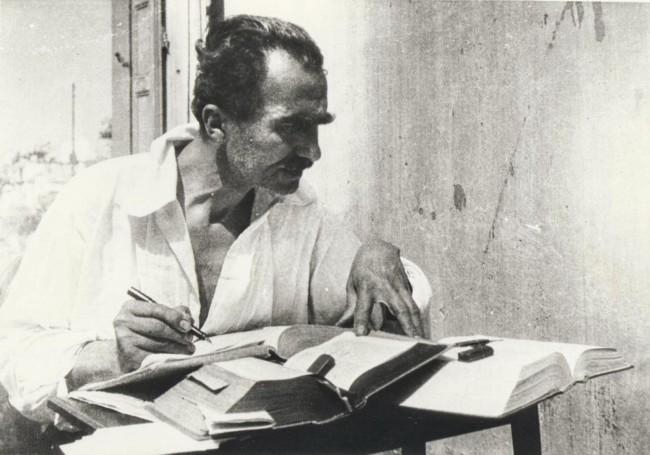 In a bid to remember and commemorate the writer and philosopher that was Nikos Kazantzakis, the Ministry of Culture has declared 2017 as the ‘Year of Nikos Kazantzakis’.
In a bid to remember and commemorate the writer and philosopher that was Nikos Kazantzakis, the Ministry of Culture has declared 2017 as the ‘Year of Nikos Kazantzakis’.

